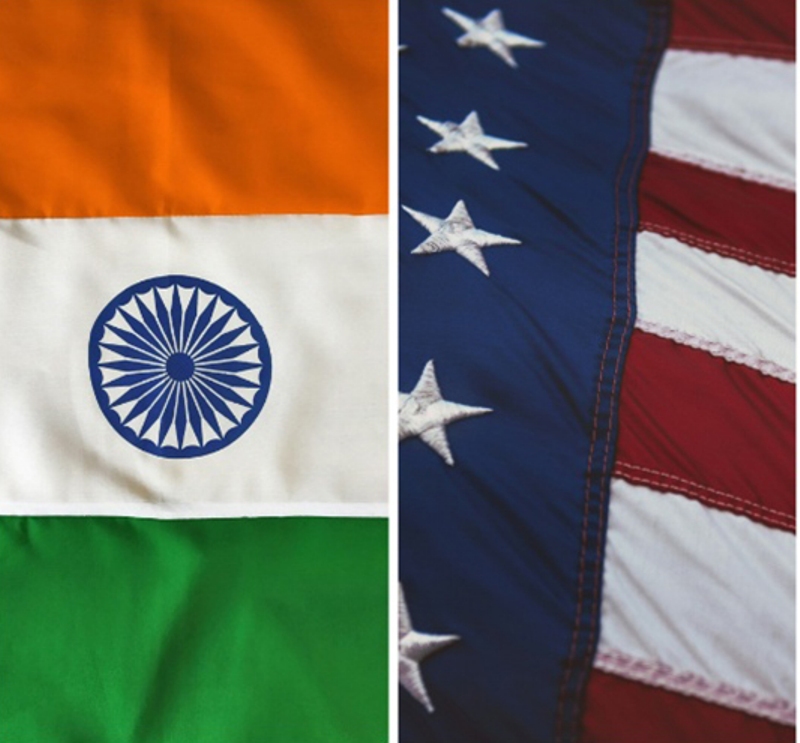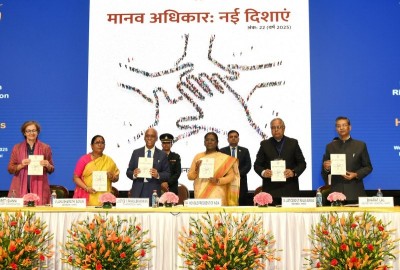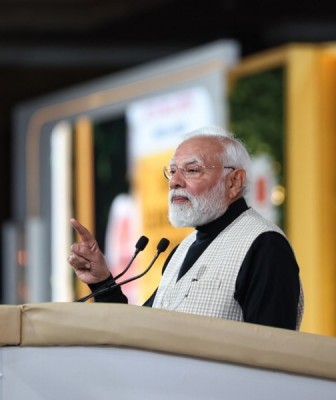 India-USA
India-USA
Burgeoning India-US trade synergy and collaboration with global vision
The U.S. Department of Agriculture (USDA) is leading a trade mission to New Delhi, India from April 22-25, 2024.
This diverse group includes representatives from 47 businesses and organizations, along with officials from 11 state agriculture departments.
Their presence highlights the vast potential of India's growing market for American agriculture. Under Secretary Taylor emphasized India's booming economy and growing middle class with a taste for American food.
The combination of India's confidence in the quality of U.S. goods has led to a significant 11% increase in U.S. agricultural exports to India over the past two years.
The USDA is actively supporting this growth by opening new markets. Recent tariff reductions on key products like poultry and fruits further strengthen the U.S.-India trade relationship.
This trade mission aims to capitalize on these successes by securing new purchase agreements for American producers. By promoting agribusiness trade, the USDA is working to expand its benefits to a wider range of American farmers, businesses, and communities.
This mission aims to connect American agribusinesses with potential buyers from India, Nepal, and Sri Lanka. U.S. participants will benefit from market briefings, meetings with USDA leaders, and networking opportunities throughout the event.
This focus on India, Nepal, and Sri Lanka makes sense – these countries represent a growing market with over $2.5 billion spent on U.S. agricultural products in 2022 alone. In particular, India boasts a booming economy and a growing middle class, creating a strong demand for a variety of U.S. exports like meat, dairy, fruits, nuts, and even cotton and wood products.
India's massive population, the largest in the world, is experiencing a surge in economic growth.
This means more Indian households have money to spend on consumer goods, including imported agricultural products. These products are becoming increasingly popular as incomes rise.
This creates a significant opportunity for U.S. agricultural exporters to enter the Indian market and meet the growing demand for imported food and other agricultural products.
The United States has a bright future in exporting a variety of agricultural products to India.
This is due to a recent reduction in tariffs on American goods like pecans, almonds, apples, and more. Additionally, India is expected to lower import taxes on blueberries, cranberries, and certain frozen poultry in 2024.
With these changes, India's large and growing population presents a significant opportunity for U.S. exporters of cotton, dairy, ethanol, fresh fruits, wood products, processed foods and drinks, pulses, and tree nuts.
India's agricultural imports have grown significantly in the past 5 years, reaching $37 billion in FY 2023. Vegetable oils, particularly palm oil, are the top import category, driven by India's large population and limited domestic production. Pulses, a major protein source for vegetarians in India, are another significant import, with lentils showing the biggest increase in recent years. Other major imports include tree nuts, forest products, and industrial ingredients. The United States supplies some soybean oil and almonds but faces competition from other sources for these products.
According to a media report on April 19, during a US congressional hearing on trade, US Trade Representative Katherine Tai addressed concerns raised by senators about India. The senators were worried about subsidies on wheat and rice in India, and also about possible forced labor in India's shrimp industry.
In response, Ms. Tai confirmed that India has opened its markets to American agricultural products in up to 12 categories. This is seen as a positive step by the Biden administration.
The United States and India recently resolved seven disputes at the World Trade Organization (WTO). As a result, India has agreed to lift tariffs on several American agricultural products. This is good news for American farmers, particularly those who grow chickpeas, lentils, almonds, walnuts, and apples. These farmers are located in states like Michigan, Oregon, California, and Washington. Additionally, the agreement improves market access for turkey, duck, blueberries, and cranberries.
This will benefit producers in North Carolina, Pennsylvania, Virginia, Massachusetts, and Minnesota. U.S. officials emphasized that trade deals should benefit all Americans, and they are working to include more voices in the trade policymaking process.
Agribusiness is merely one of the sectors in which trade between India and the USA has lately seen a buoyancy. The 2023 visit of Prime Minister Modi to Washington D.C. marked a significant step in US-India relations, with technology identified as a key area of cooperation. This partnership aims to diversify the global supply chain for semiconductors, a critical technology currently dominated by China. The US has been concerned about China's dominance in chip technology and has taken steps to limit its access. This includes restricting Chinese companies' access to US-made chips and encouraging other countries to do the same.
The US-India Initiative on Critical and Emerging Technologies (iCET) was announced in 2022 and further detailed in January 2023. This initiative focuses on building a strong semiconductor ecosystem in India, including chip design, manufacturing, and a skilled workforce. During Modi's visit, a specific agreement on Semiconductor Supply Chain and Innovation Partnership was signed. This agreement will promote collaboration between US companies and India, with significant investments from Micron Technology and Applied Materials. Additionally, Lam Research will provide training for Indian engineers in chip fabrication. These developments show promise for reducing China's dominance in the chip market. While it may take time for India to become a major player, this partnership positions India strategically and strengthens US-India relations.
Meanwhile, Apple's iPhone exports from India are booming! According to The Trade Vision, they nearly doubled from $6.27 billion in 2022-23 to $12.1 billion in 2023-24. Concurrently, India's total smartphone exports increased from $12 billion to $16.5 billion in the same period. Apple's decision to boost iPhone manufacturing in India stems from strategic diversification and the appeal of India's expanding market. Government incentives like the PLI scheme further incentivize this shift towards local manufacturing. This move has notably impacted the US market. In 2023-24, iPhones constituted a significant portion of the $6 billion in smartphones imported from India, with a whopping $5.46 billion being iPhones, a significant jump from $2.1 billion the year before. Apple is also in discussions with Indian companies like Titan and Murugappa Group to manufacture camera modules for iPhones directly in India. Currently, they only assemble iPhones there, with camera modules still coming from elsewhere. Making these parts in India would further reduce Apple's dependence on China.
The United States and India have a strong partnership in healthcare research. Their collaborative efforts span diverse medical fields, aiming to pioneer new treatments and diagnostic methods. Notably, the development of Rotavac®, a cost-effective vaccine for childhood diarrhea, exemplifies their successful collaboration under the Bilateral Vaccine Action Program. This initiative underscores over 200 active research partnerships between US and Indian institutions, facilitating affordable medication supply to the US. To address broader health concerns, India and the US also have a formal dialogue led by their respective health ministries. They have collaborated on issues like COVID-19 and cancer research.
Experts believe that the US has indirectly supported the desirability for India to be assigned a permanent membership of the Security Council of the United Nations Organization. Elon Musk, CEO of Tesla, sparked discussion earlier this year by calling out the lack of a permanent seat for India on the United Nations Security Council (UNSC). In response to a journalist's question, the US State Department expressed support for reforming UN institutions, including the UNSC, to better reflect the current global scenario. While they didn't specify the exact steps, they acknowledged the need for change. This aligns with comments made previously by the US President and Secretary of State.
In conclusion, The USDA's trade mission to India highlights a strategic partnership for agricultural growth and broader collaboration. With tariff reductions and market access improvements, the outlook for U.S. exports to India is promising. This mission aligns with efforts in critical technologies, healthcare research, and advocating for India's UN Security Council seat. This mission showcases a shared commitment to innovation, inclusive trade, and addressing global challenges, paving the way for mutual economic growth and prosperity.
Support Our Journalism
We cannot do without you.. your contribution supports unbiased journalism
IBNS is not driven by any ism- not wokeism, not racism, not skewed secularism, not hyper right-wing or left liberal ideals, nor by any hardline religious beliefs or hyper nationalism. We want to serve you good old objective news, as they are. We do not judge or preach. We let people decide for themselves. We only try to present factual and well-sourced news.







